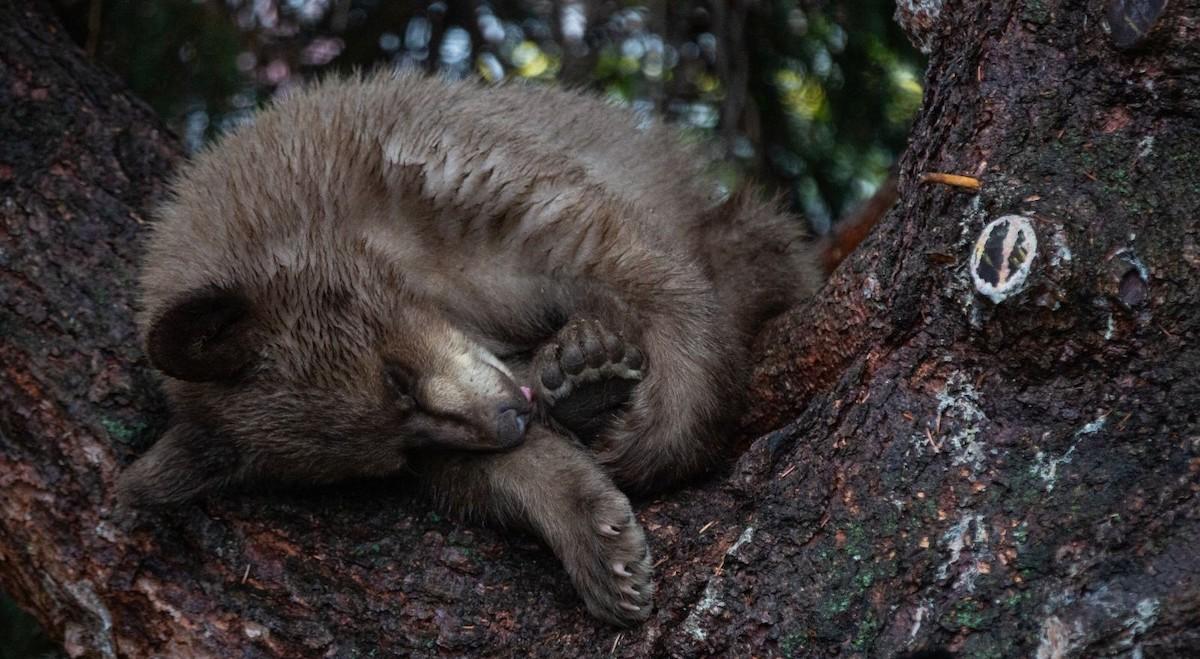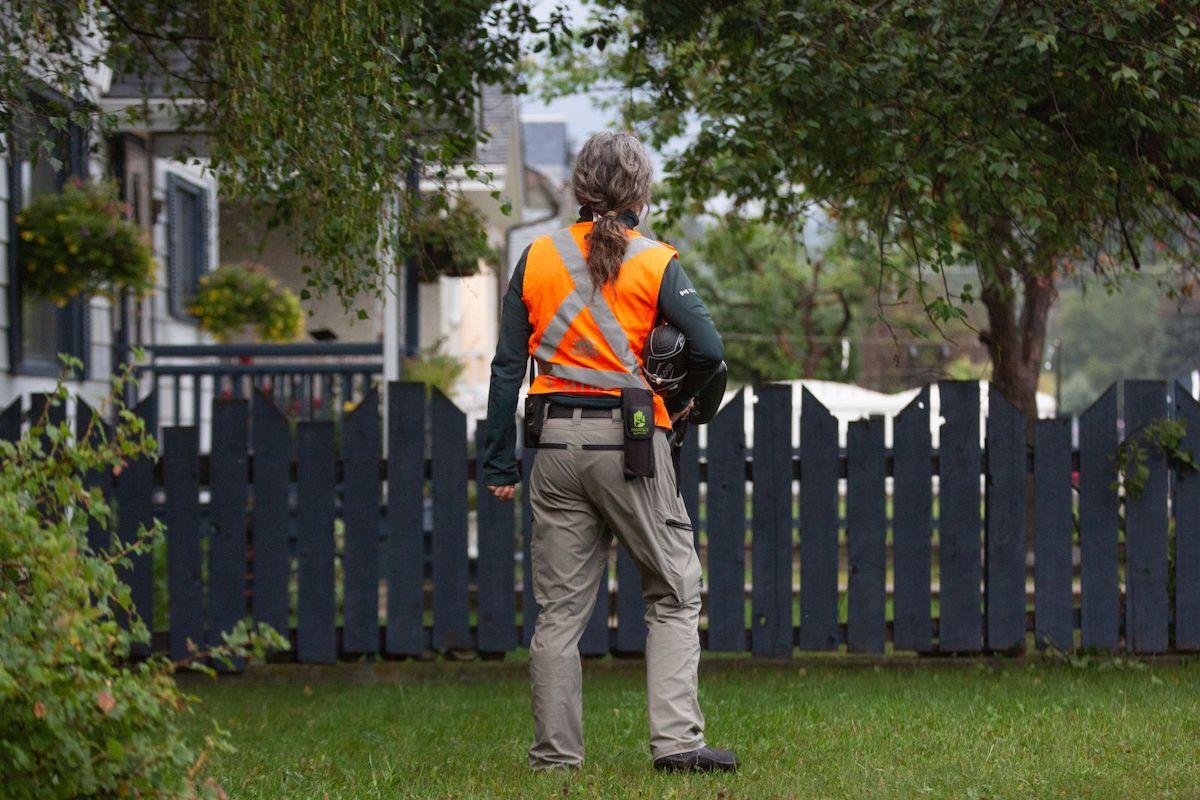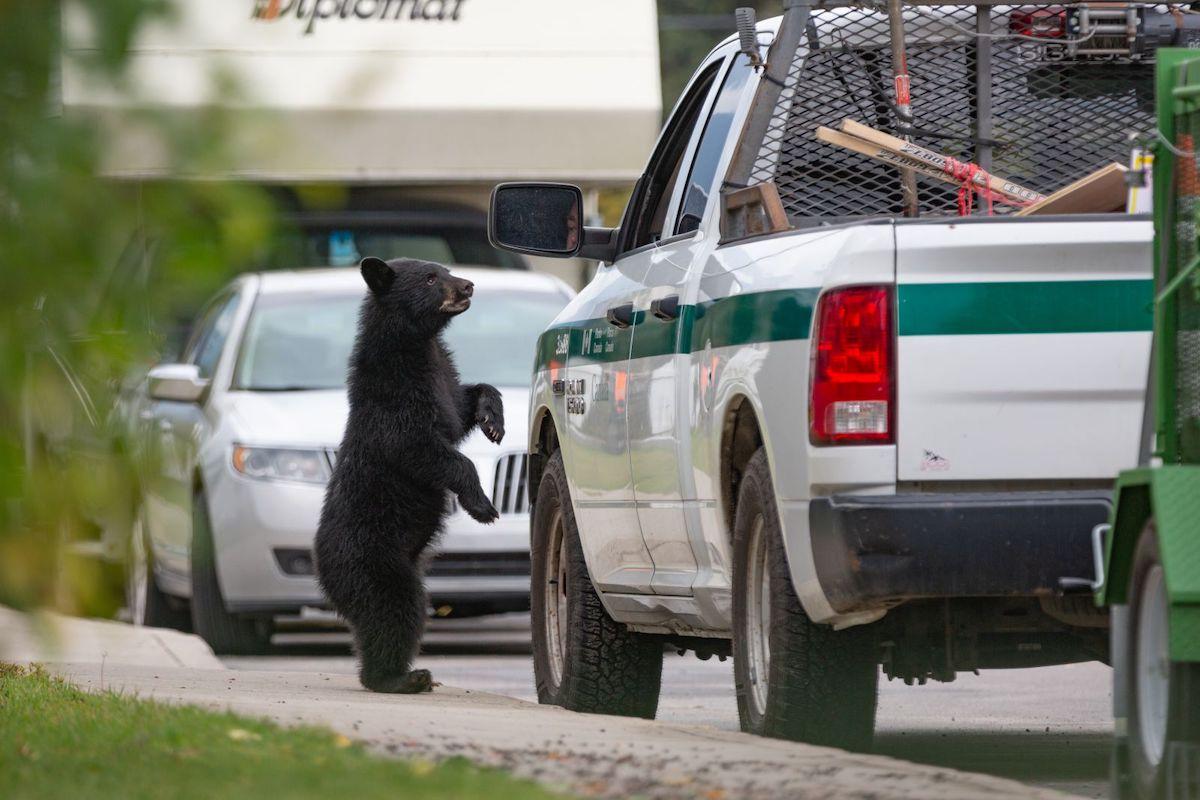
A young black bear naps in a residential tree in the town of Jasper within Jasper National Park/Parks Canada
A seriously injured black bear cub has been euthanized by Parks Canada for humane reasons in Jasper National Park.
Over the last month or so, there has been a recognizable black bear family with a mother and three cubs in the Alberta town of Jasper. The family was easy to spot as the mother and two of the cubs were a light cinnamon color, while the third cub was black.
On Sept. 7 or 8, one of the cinnamon-colored cubs lost a hind leg due to a severe injury. The family unit was spotted with the injured cub on Sept. 9, but by the next day, the mother had abandoned the injured cub, and on Sept. 11, the cub was reported alone outside of town. Parks Canada wildlife specialists determined the probability of the injured cub surviving was extremely low, and made the difficult decision to capture, sedate and humanely euthanize the cub.
“The injury was consistent with what we’d expect to find in a railway incident, but we can’t point at that definitively without having witnessed it,” resource conservation manager David Argument said in a news release.

Parks Canada staff traps a black bear family in the town of Jasper/Parks Canada, Luuk Wijk
Parks Canada responds to bears in town by using hazing strategies. When hazing is unsuccessful and bears display strong habituation behaviors, it considers trapping and relocating bears. This option isn't used for all bears that frequent town, as it is not always successful because relocated bears are known to have lower survival rates and may travel long distances to return to town. As a last resort, a decision may be made to destroy a bear.
Mother bears are teaching their cubs that the town's 700-plus fruit trees are a good source of food. A yearling black bear that was frequenting fruit trees in town this year is thought to have learned this habit from her mother last year. This yearling was recently captured and relocated east of the townsite.
Keeping bears out of town is not possible while fruit remains accessible as a food source. In the four-kilometre (2.4-mile) span of town there are about 700 non-native fruit trees, creating a strong attractant for bears stocking up on calories before winter. Each day spent in town further habituates these bears and reduces their wariness of humans, vehicles and trains. Once bears feed on fruit, they will repeatedly come back for more until the tree is removed. Even after tree removal, bears tend to return to the same spot until they learn that location is fruitless.

Parks Canada works to trap a black bear family in Jasper/Parks Canada, Luuk Wijk
Bears in residential areas pose a potential risk to public safety, and Parks Canada is seeking help from the community to secure or remove bear attractants in the townsite, especially fruit trees.
People can pick their own fruit (including ornamental berries) or bear-proof their trees, but the most effective thing to do is remove all fruit trees. Parks Canada may be able to help do that for free for some trees. Larger trees, or trees that represent a safety concern (power lines, overhanging building, etc.) may require specialized services, currently at the property owner’s expense. Call 780-852-8118 for a free assessment.
In cooperation with the Municipality of Jasper, Parks Canada is removing non-native fruit trees on municipal property. "This work is important," Parks Canada said, "but this effort must be community-wide to truly make an impact and give bears the highest chance of survival."
Bear sightings inJasper townsite should be reported immediately to Parks Canada Dispatch at 780-852-6155. Parks Canada will haze bears out of trees and away from town when it is safe to do so. Swift responses to bear issues will help ensure public safety. If you see bears in town being moved by Parks Canada staff, keep a distance of 100 metres (330 feet) to give staff the space they need to work safely.


